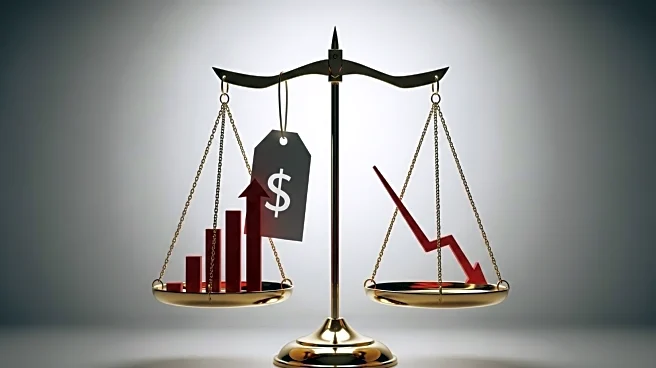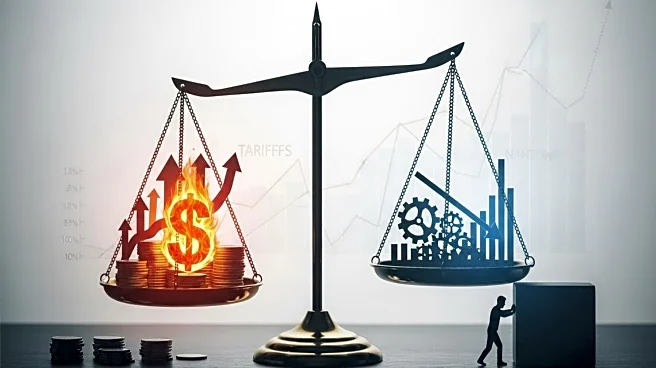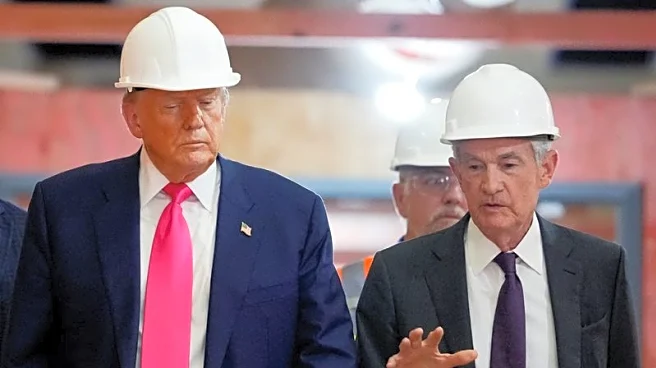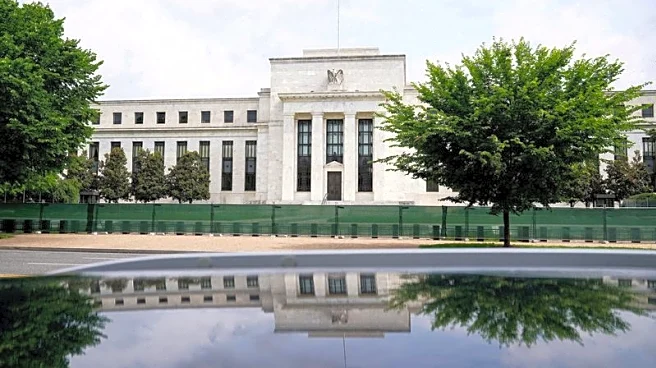What's Happening?
The Federal Reserve is grappling with the challenge of managing inflation driven by tariffs imposed by the Trump administration, while also addressing signs of a weakening labor market. The U.S. average effective tariff rate has reached 18.6%, the highest since 1933, causing price surges in sectors like clothing and footwear. Core inflation has climbed to 3.1%, reflecting the delayed pass-through of tariff costs to consumers. Meanwhile, the labor market shows signs of strain, with job creation slowing and consumer confidence falling. The Fed is considering a 25-basis-point rate cut in September, but internal divisions exist regarding the urgency and magnitude of such cuts.
Why It's Important?
The situation presents significant implications for the U.S. economy, as tariff-driven inflation acts as a regressive tax, disproportionately affecting lower-income households. The weakening labor market could lead to reduced consumer spending and economic growth. The Federal Reserve's decision on interest rates will impact financial markets and investor confidence. Political pressures from the Trump administration add complexity to the Fed's policy decisions, potentially influencing the central bank's approach to managing inflation and supporting the labor market.
What's Next?
The Federal Reserve's next move will depend on the persistence of tariff-driven inflation and the extent of labor market deterioration. If inflation expectations become entrenched or the labor market weakens further, more aggressive policy actions may be required. The Fed is likely to adopt a 'wait and see' approach, with a potential rate cut in September. The challenge for policymakers is navigating uncertainty and balancing risks to stabilize the economy.












